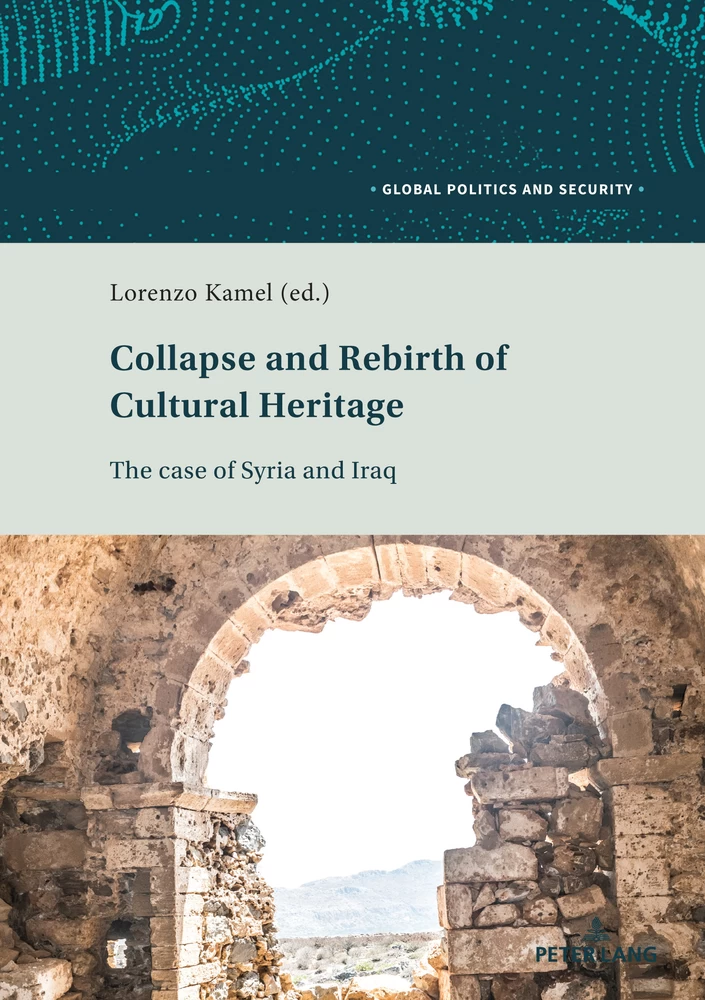Collapse and Rebirth of Cultural Heritage
The Case of Syria and Iraq
Summary
Excerpt
Table Of Contents
- Cover
- Title
- Copyright
- About the editor
- About the book
- This eBook can be cited
- Contents
- Figures
- Foreword (Ettore Greco and Nicolò Russo Perez)
- Introduction (Lorenzo Kamel)
- Chapter 1: The Steep Cost of Destabilizing Iraq and Syria (Elijah J. Magnier)
- Chapter 2: The Reconstruction and Recovery of Syrian Cultural Heritage: The Case of the Old City of Aleppo (Francesco Bandarin)
- Chapter 3: The Italian Response to the Cultural Heritage Emergency in Iraq (Stefano de Martino)
- Chapter 4: Space, Time and People: How the Destruction of Mosul’s Heritage Is Reshaping Its People’s Future (Omar Mohammed)
- Chapter 5: The Role of Academia in Enabling the Illicit Antiquities Market: The Damage to Iraq’s Cultural Heritage (Abdul Salam Taha)
- Chapter 6: Cultural Heritage as a Process of Accumulation: The ‘Paradigm of Gilgamesh’ (Lorenzo Kamel)
- Contributors
- Abbreviations
- Series index
Figures
Figure 2.1: Destruction of the Old City of Aleppo, situation in November 2010 and October 2014
Figure 2.2: Damage assessment for the city of Aleppo
Figure 2.4: Old City of Aleppo: damage to historic buildings
Figure 2.5: The three central areas where the damage assessment was carried out
Figure 2.6: Aerial photo of the Great Mosque after it was damaged
Figure 2.7: The destruction of the minaret of the Great Mosque, 24 April 2013
Figure 2.8: The Great Mosque of Aleppo: damage to the exterior and interior
Figure 2.9: Historic Suqs area: general damage assessment
Figure 2.10: Aleppo, the historic Suqs, before and after
Figure 2.11: Area of the Citadel: general damage assessment
Figure 2.12: Aleppo, the Citadel: the main entrance gate and the Ottoman post
Figure 2.13: The destruction of the Carlton Hotel with a tunnel bomb in May 2014
Figure 2.14: Residential districts area: general damage assessment and view
Figure 2.15: Removal of debris in the Aleppo old Suq
Figure 2.17: Damaged pillars in the interior of the Great Mosque (dismantling and reconstruction)
Figure 2.18: Location of the Suq al-Saqatiyya
Figure 2.19: The Suq al-Saqatiyya before and after the restoration
Figure 2.20: Citadel: Mill Tower after restoration
Figure 4.1: Traditional buildings in Old Mosul
Figure 4.2: Khan Al Gumrig, reconstruction process
Figure 4.3: Entrance of Suq Al Haddadin, Blacksmiths, 2019
Figure 4.4: Destroyed Islamic historical sites in Old Mosul: An Assessment
←7 | 8→Figure 4.5: Map of the main historical mosques in Old Mosul
Figure 4.7: Ruins of Al-Nuri Mosque, 2018
Figure 4.8: Hadbaa Minaret, 2013
Figure 4.9: Suq Al-Haddadin, 2019
Figure 4.10: Destruction of the Old Markets in Old Mosul, 2018
Figure 4.11: Khan and old markets, Old Mosul, 2018
Figure 4.12: Ruins of Sawwafa market, 2018
Figure 4.13: Ruins of Khuzam Mosque, 2019
Figure 4.14: Parts of Bab-l Saray Suq under reconstruction, 2018
Figure 4.15: Suq Al Haddadin, 2019
Figure 4.16: Map of the Suqs of Old Mosul
Figure 5.1: The Narām-Sîn Fragment
Figure 5.2: Cataloguing and publication of texts from Garšana
Figure 5.3: Copy of investigation report by Homeland Security on Rosen’s Garšana tablets
Figure 5.4: English translation of Rihani export license
Figure 5.5: Cataloguing and publication of text from Irisaĝrig
TablesTable 4.1: List of destroyed Islamic historical sites in Old Mosul
Ettore Greco and Nicolò Russo Perez
Details
- Pages
- 174
- ISBN (Softcover)
- 9783034341271
- ISBN (PDF)
- 9783034341356
- ISBN (ePUB)
- 9783034341363
- ISBN (MOBI)
- 9783034341370
- DOI
- 10.3726/b17248
- Language
- English
- Publication date
- 2020 (June)
- Keywords
- Cultura Heritage Syria Iraq Middle East
- Published
- Bern, Berlin, Bruxelles, New York, Oxford, Warszawa, Wien, 2020. 174 pp., 41 fig. b/w, 2 tables.
- Product Safety
- Peter Lang Group AG

